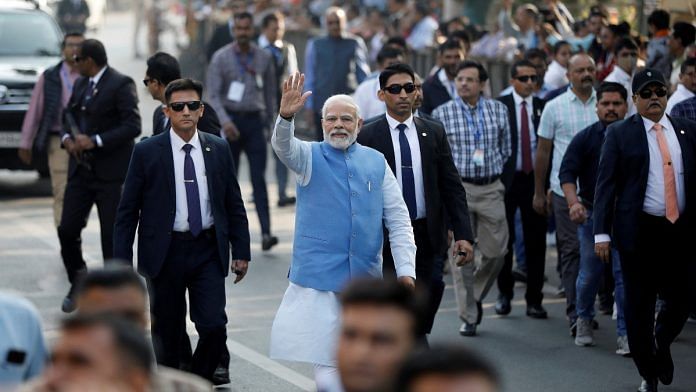The Ministry of Finance will soon release the last full Budget of the Narendra Modi government’s second term. This provides one last chance to lay out key reforms and incentives that will help India attract a large share of manufacturing supply chain investment that is currently fleeing China.
With election season commencing later this year, the window for making big reforms may close—at a time when investors are hungry for options. India has multiple important reasons to try to become more integrated into global supply chains. This will enable rapid job creation, combat the nation’s high goods trade deficit, and secure the supply of strategic materials and products.
- Balance of trade: India has a massive $284 billion deficit in the 12 months through November 2022. That is equivalent to about 9 per cent of GDP and is nearly 50 per cent higher than the pre-Covid peak.
- Employment generation: Nearly half of the labour force in India still toils away in basic agriculture. While the big agriculture bill proposed in 2020 failed, other reforms will accelerate modernisation. Finding employment for workers is crucial.
- Strategic materials and products: Covid-related supply chain interruptions, paired with China’s increasing comfort in using economic coercionagainst rivals, have reinforced India’s desire to ensure alternative supply chains for crucial items—preferably “onshoring.”
Nearly a decade after the “Make in India” campaign was launched in 2014, it is hard to find evidence of its success. Per the World Bank, manufacturing as a percentage of GDP is stuck at 14 per cent, down from 16 per cent in 2015. India’s 12-month foreign direct investment (FDI) inflows hit all-time peaks during Covid, hitting $74 billion by July 2021. But this spike was driven mainly by block investments into Reliance Jio. FDI has moderated quite a bit since then, with $55 billion in the 12-month period through October 2022. Sectoral FDI data from the Department for Promotion of Industry and Internal Trade (DPIIT) does not indicate a spike in FDI into manufacturing industries, either.
While the World Bank may have discontinued its Doing Business report, the Finance Ministry should keep its lessons in mind. Areas, where India ranked poorly in the last Doing Business report should be prioritised for improvements. This includes starting a business, registering property, paying taxes, and enforcing contracts. The government has made real progress on the first item in launching the National Single Window System (NSWS). Allocation of resources in these areas in the Budget, as well as related aspirational policy announcements, will continue building India’s credibility as a manufacturing hub.
Also read: Border crisis, no NSS, no reforms. But Modi govt is going after imagined colonial demons
Pending reforms
At the time of the Modi government’s re-election in 2019, our programme, the Wadhwani Chair in US-India Policy Studies at Center for Strategic and International Studies (CSIS), did a survey of top business leaders and economists to highlight the 30 most significant job-creating reforms the government should consider—our India Reforms Scorecard. We had undertaken a similar exercise in 2014. By way of comparison, the Modi government completed nine of these 30 big reforms in its first term, and another 15 reforms were partially completed. With this tool, the pace of reforms demonstrably slowed down in the second term. The government has only completed six of 30 reforms, and another five reforms have been partially completed.
Many of the pending reforms we are tracking have been highlighted by the Modi government for action. Filling judicial vacancies and digitising court documents, easing land acquisition, improving the process of developing business regulations, simplifying the Goods and Services Tax (GST), and other pending reforms are among the key that could be within the government’s reach in its term end. The government of India has shown courage at times, such as finally moving ahead with privatising Air India or lifting foreign investment caps in sensitive sectors like defence, insurance, and telecommunications. The 2021 revocation of retrospective taxation for investors using treaty partners also helps repair past damages. Despite these laudable successes, there is no “end state” to crafting a welcoming investment environment.
Moving forward with a robust, end-of-term reform programme will send a powerful signal to global investors—one that says that India is, indeed, hungry to attract the supply chain investments that are seeking alternatives to China. The government should use the Budget speech to send an unambiguous signal that, even entering election season, it is willing to work hard to attract such investments.
Richard Rossow is the Wadhwani Chair in U.S.- India Policy Studies, at the Center for
Strategic and International Studies (CSIS), Washington DC. He is also the Managing
Director at McLarty Associates, where he leads the India &South Asia practice.Views are personal
(Edited by Ratan Priya)



